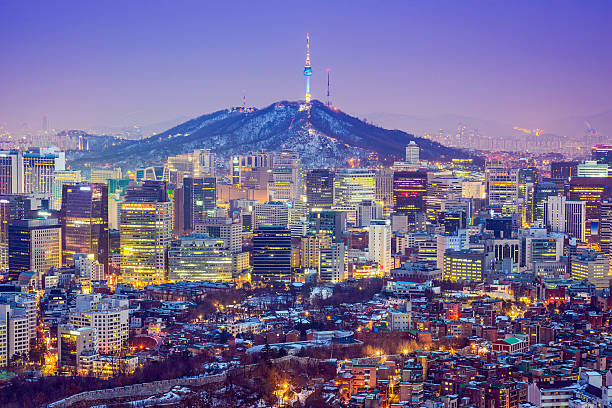Information for travellers visiting South Korea
South Korea, also known as the Republic of Korea (ROK), is a nation in East Asia that is located on the Korean Peninsula’s southern tip and borders North Korea on the land. The Korean Peninsula, which is divided by a razor-thin border, offers visitors an array of experiences, stunning panoramas, and 50 centuries of culture and history. The Lower Paleolithic era records the earliest human presence on the Korean Peninsula and early in the first millennium BCE, Chinese records mention its first kingdom. The fastest and most convenient way to navigate large cities is by using the subway system.

The systems in Seoul, Busan, Daegu, Gwangju, and Daejeon are all unique. South Korean transportation is reasonably priced, hygienic, and safe. South Korea has about 15 large airports. According to Korea’s mythology, Joseon (Gojoseon) was established in 2333 BCE by Dangun. Chinese documents from the early 7th century mention Gojoseon. Gojoseon expanded until it ruled over a portion of Manchuria and the northern Korean Peninsula. Gija Joseon is thought to have been established in the 12th century BCE, but its existence and historical significance are debatable today.
The Han dynasty overthrew Wiman Joseon in 108 BCE and established four commanderies in the north of the Korean peninsula. Around this period, the Lelang commandery was demolished and rebuilt, and the location slowly migrated toward Liaodong. As a result, its power was reduced, and up to Goguryeo’s conquest of it in 313 it merely functioned as a trading hub. The generosity of Koreans toward foreigners is greatly influenced by decorum, and their innate graciousness is one of their most attractive traits. In a society that is sometimes contemplative, but also polite and affirmative, time-honoured Confucian traditions have established a model for strong civic pride.
Helpfulness abounds, whether you’re at a tourist information centre, asking for directions, or getting stunk into a conversation. While travelling, people will make up half of the experience, and the Korean tribe is one that you will enjoy being around. You may pass through beautiful landscapes and look out over brilliant oceans. Although Korea is referred to as the Land of the Morning Calm, if you visit Seoul, the hub of Asia’s 3rd-largest economy, you might not find peace there. This 24-hour city embodies the unflappable attitude with its nonstop motion and work-hard mindset. In this varied city, where painstakingly restored palaces coexist with lively night markets and strikingly contemporary architecture, you can hardly turn a corner without running into a helpful tourist information desk, a busy subway station, or a taxi.
Because of South Korea’s small size and excellent transportation system, tranquilly is always accessible despite urban development. Hike to the tops of rocky mountains that are encircled by heavily forested national parks and some of which turn into ski slopes in the winter. Sailing to isolated islands will take you farther from civilisation than you ever imagined. Stay in a simple Hanok guesthouse in one of the peaceful villages surrounded by rice fields. Wherever you are, there’s nearly always a celebration of some kind to attend thanks to a jam-packed calendar of festivals and events, whether it’s in Boryeong or Gwangju, or Seoul.
The native food offers a tantalising variety of meals, flavours, scents, and textures, which may be enjoyed with plenty of toasting and a dizzying number of alcoholic cocktails. It’s no wonder that Koreans are proud of their culinary culture. The primary course of any Korean meal is traditionally rice, which is accompanied by soup and banchan. However, these meals are frequently served to diners as main courses at Korean restaurants.



